NextGen Multi-cloud orchestration platform!
sailor is an AI-driven multi-cloud orchestration platform that enables self-service using well-architected blueprints from day 0

What can Sailor help achieve
DevOps
- Workflow as a code
- Service Now integration
- Application catalogue
- Kubernetes Deployment
CloudOps
- One-click environment cloning
- Battle tested modules
- Standardized Templates
- Approval Workflows
- Ticketless provisioning
SecOps
- Compliance as Code
- Security as Code
- Identity & Access Management (IAM)
- Compliance identity reports
- Audit ready infrastructure
FinOps
- Infra cost estimate
- BU level granular cost visibility
- Budget Management
- Optimization recommendation
- Cost Forecasting
- Chargeback management
How Sailor Works ?
Simple Onboarding with pre-designed and optimized infra estimation. Choose the best suited infrastructure as per your business need. Thereafter, Sailor helps you with granular cost & Asset visibility to the extent of account/business unit and application level.


How Sailor Works ?
Sailor helps you with granular cost visibility to the extent of account/business unit and application level. Get proactive alerts about under-utilized and over-utilized machines,




What is Sailor?
Sailor is a control-plane to make cloud adoption simple and customizable, via self service model with cloud governance
TANGIBLE BENEFITS
Sailor
Sailor Cloud is an innovative multi-cloud hyperscaler management platform that can unlock the power of your business’s cloud infrastructure. As businesses continue to adopt cloud-based solutions, managing multiple hyperscalers has become a complex task, with each hyperscaler having its own unique set of tools, interfaces, and management systems.
Sailor acts as a control-plane to make cloud adoption simple and customizable, via self service model with cloud governance and infrastructure creation.
We want to bring the best of clouds in a simple & self-service way to our customers where they can build, monitor, upgrade, scale, de-scale, delete and manage their cloud infrastructure via Sailor.

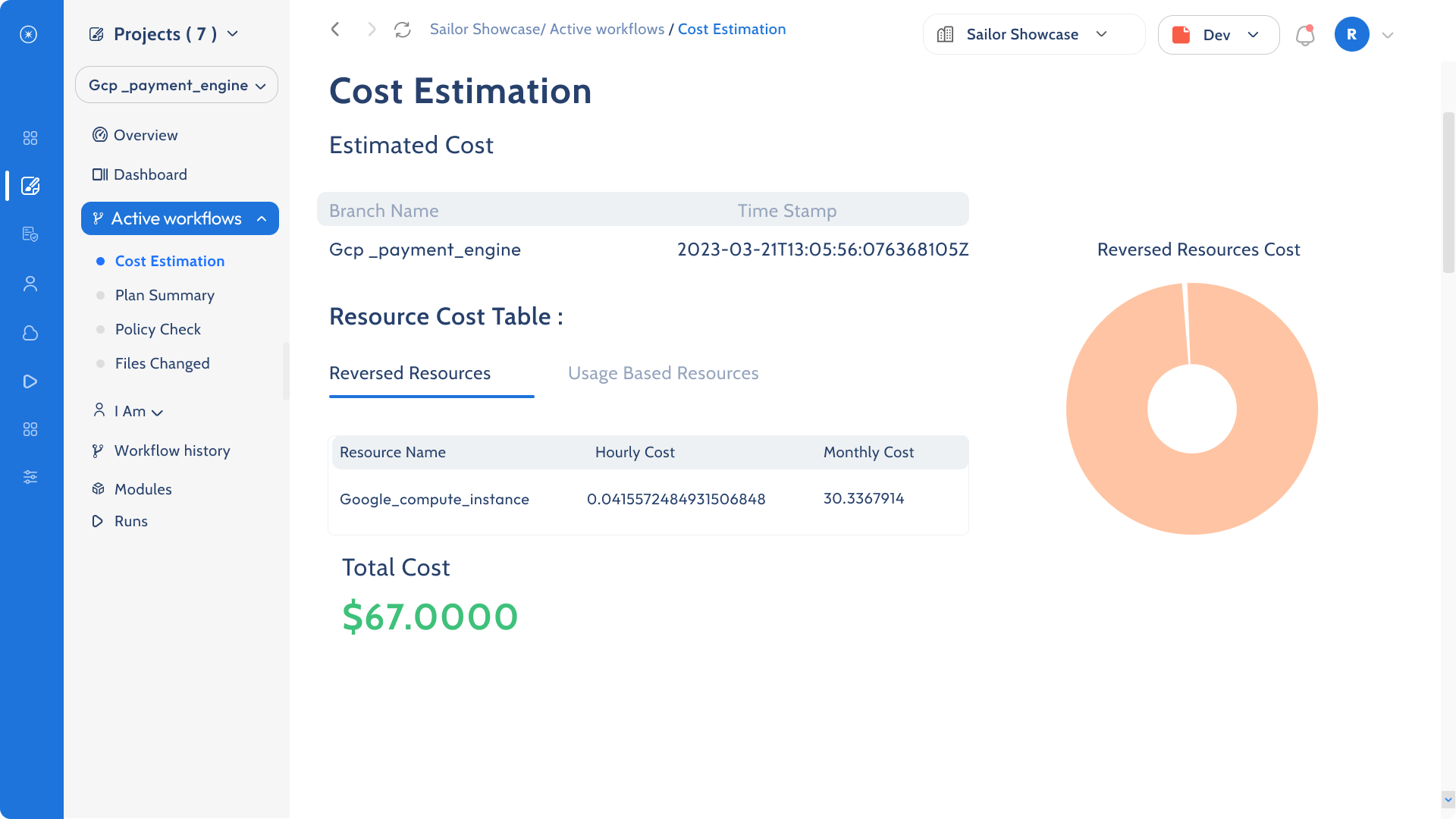
Product Over view

Environment as a Code
Single-Unified control plane to design, manage, automate and govern entire environments

Platform Orchestrator
Self Service Developer Platform that brings single layer of Integration across SDLC

Hyper Automation
Strengthens all your existing tooling and tech Out-of the-box interoperability and advanced AI driven 'super automation' capabilities
Why Use Sailor?
Sailor helps you with granular cost visibility to the extent of account/business unit and application level. Get proactive alerts about under-utilized and over-utilized machines,
in Provisioning
- No code / low code
- One-click environment cloning
- Battle tested modules
- Standardized Templates
- Approval Workflows
- Ticketless provisioning
- Automated Workflows
in Monitoring
- Cost Dashboard
- Infra Reports
- Granular Cost Visibility
- Proactive alerts
- Resource Status Active/Inactive/Under-utilized & over-utilized machines
in Governance
- Compliance as Code
- Security as Code
- Identity & Access Management (IAM)
- Compliance identity reports
- Audit ready infrastructure
- Automated GRC
in Scaling
- Environment Addition
- Lo Code/No Code asset addition
- Availability tracking
- Redundancy planning
- Elasticity
- Load Balancing
in Migration
- Infrastructure & Application Modernization
- Change Estimation
- Lift & Shift
- Re-platform
- Re-factor
in Managment
- Multi-Cloud Account management
- Infra cost estimate
- BU level granular cost visibility
- Budget Management
- Optimization recommendation
- Cost Forecasting
- Chargeback management
Our Product
Sailor helps you to manage multiple account, projects and tenants together & helps you to achieve the desired availability, scalability, reliability for your infrastructure on the cloud of your choice, through terraform driven automation
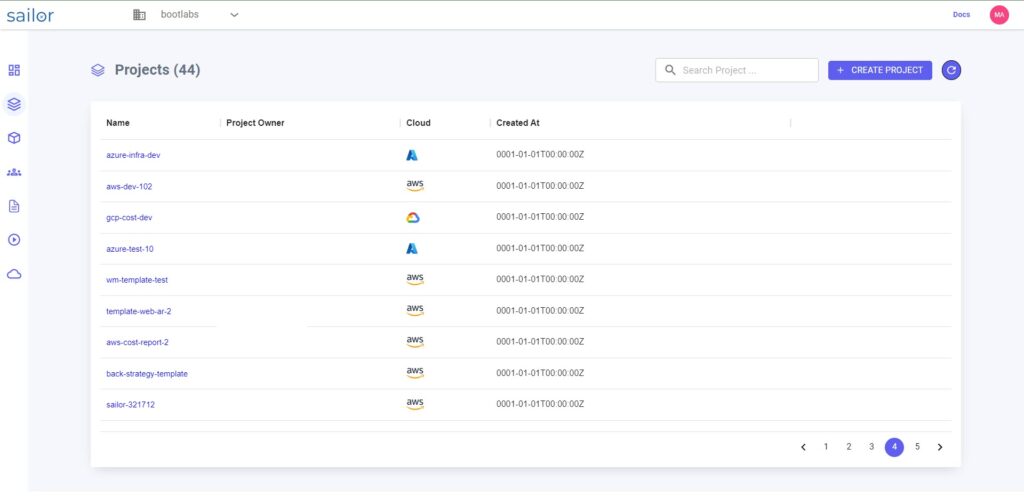
Provisioning
Sailor’s automated workflow and no-code/low code helps to provision and govern heterogeneous computing infrastructure. Through Sailor, you infuse continuous compliance and infrastructure standardization. Create, reboot and destroy infrastructure through module templates. Get complete 360-degree view of the infrastructure.
Compliance
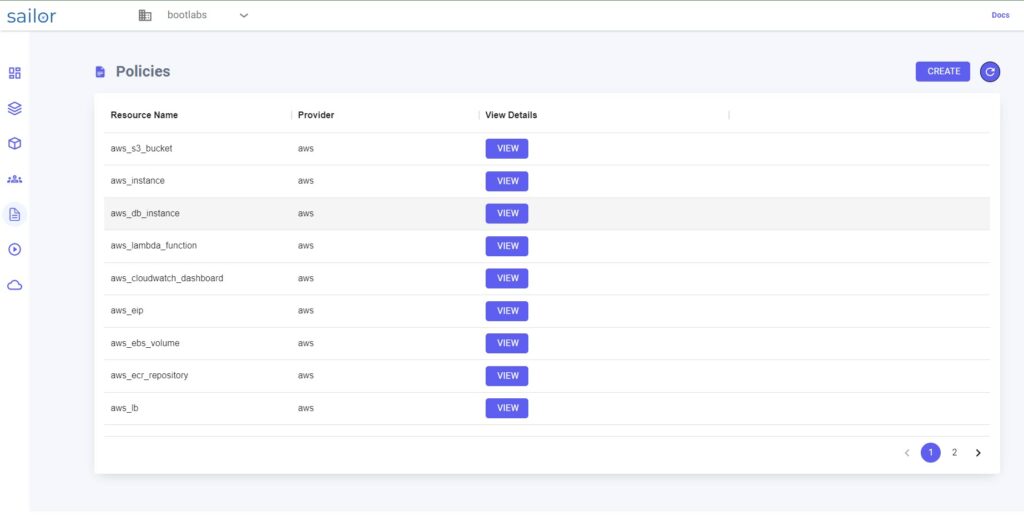
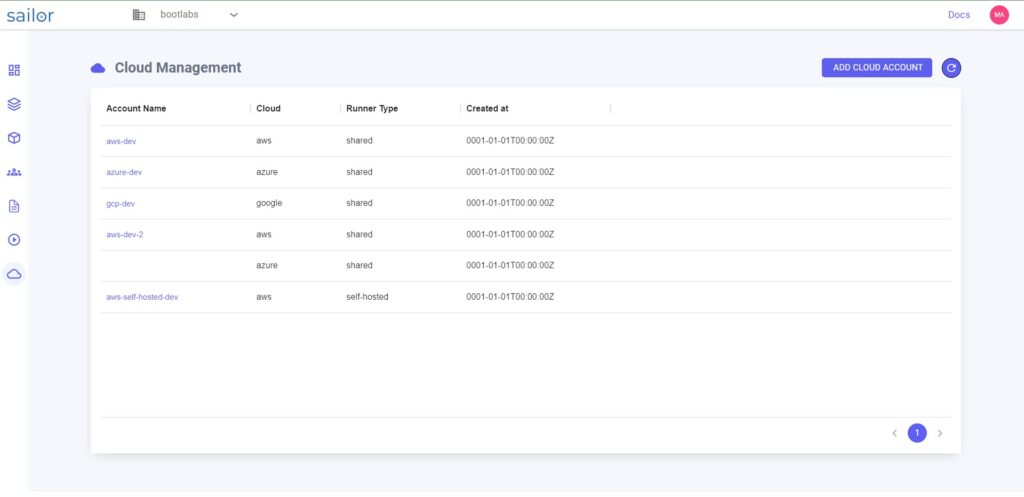
Multi-Cloud Management
Sailor’s multi-cloud adoption solution helps businesses avoid vendor lock-in and provides flexibility in cloud infrastructure management. Easily manage all your accounts and their assets while you complete control of all the credentials. With Sailor, users can easily migrate and scale their workloads across multiple cloud platforms, ensuring optimal performance and cost-effectiveness.
Cost Management
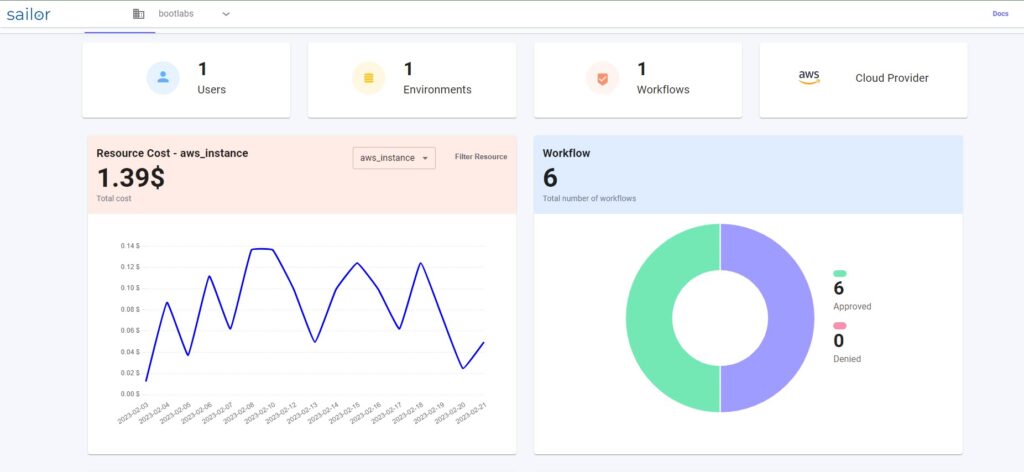
Testimonials
we have 45 reviews on our website
Subscriptions
Register for 30 Days Trial – For all types of Subscriptions
Free Tier
-
One Cloud
-
One Project
-
Community collaboration upto 5 users
-
Infrastructure creation
-
Monthly cloud limit: $1000
StartUps
-
Initial Implementation Support
-
5 Projects (additional @ $20 per project)
-
1 Cloud (additional @ $100 per cloud)
-
Monthly cloud limit: $25000
Fast User
-
Unlimited Projects
-
20% discount on yearly subscription
-
On call Technical Support
-
1 Cloud (additional @ $100 per cloud)
-
Monthly cloud limit: $50000
Enterprise
-
All offerings under Fast user +
-
Dedicated round the clock support
-
Premium features
-
Reporting and recommendations
-
No monthly cloud limit
Let's help you adopt cloud fast and easy.
If you want to accelerate your cloud journey, or you want to optimize it or you want to ensure you are always secure….do reach out to us. With Sailor your cloud journey becomes smooth
Send Us Your Message
Frequently Asked Questions
Reach out to Us via email if you don’t find your answers here
Yes, you can try us for free for 30 days. If you want, we’ll provide you with a free, personalized 30-minute onboarding call to get you up and running as soon as possible.
Sailor is a multi-cloud management platform to Simplify Cloud adoption through a simple and single control plane
You can get onboarded to Sailor via SSO, AD and Email
Proud Partners
Our Partners trust our Product






Blogs
Sailor is a control-plane to make cloud adoption simple and customizable, via self service model with cloud governance.

Why Cobra Programming Language is the Perfect Choice for Efficient and Secure Code
Are you in search of a programming language that offers both efficiency and security for your code? Look no further than Cobra! With its robust features and advanced capabilities, Cobra is the perfect choice for developers looking to write efficient and secure code. With Cobra, you can expect a seamless and hassle-free coding experience. Its simple syntax and extensive set of libraries make it easy to write clean and concise code. Not to mention, Cobra’s powerful error handling and memory management features ensure that your code runs smoothly without any hiccups. But that’s not all – security is a top priority with Cobra. The language comes with built-in security measures, protecting your code from vulnerabilities and potential attacks. From input validation to encryption support, Cobra has you covered. Whether you’re a seasoned developer or just starting out, Cobra provides the ideal environment for writing efficient and secure code. Its user-friendly interface and comprehensive documentation make it easy to get started and navigate the language. So, why compromise on efficiency or security when you can have both with Cobra? Start coding with confidence and take your projects to new heights with this exceptional programming language. Advantages of using Cobra for efficient and secure code Cobra offers numerous advantages for those seeking to write efficient and secure code. Its simplicity and ease of use make it a popular choice among developers. By employing Cobra, you can benefit from its powerful features that optimize performance and ensure the security of your code. First and foremost, Cobra’s simple syntax allows developers to write clean and concise code. Unlike other programming languages that require extensive lines of code to execute a simple task, Cobra enables developers to achieve the same results with fewer lines of code. This not only saves time but also reduces the risk of introducing errors into the codebase. Additionally, Cobra’s extensive set of libraries provides developers with a wide range of tools and functions to streamline their coding process. These libraries cover various aspects of programming, including data manipulation, network operations, and user interface design. By leveraging these pre-built libraries, developers can save valuable time and effort, allowing them to focus on the core functionality of their code. Moreover, Cobra includes powerful error handling and memory management features that ensure the smooth execution of your code. Error handling in Cobra is straightforward and intuitive, enabling developers to catch and handle exceptions effectively. This helps prevent unexpected crashes and ensures that the code continues to run smoothly, even in the face of unexpected errors. In terms of memory management, Cobra utilizes automatic memory allocation and garbage collection, relieving developers from the burden of manual memory management. This not only reduces the chances of memory leaks but also improves the overall performance of the code. With Cobra, you can rest assured that your code will be optimized for efficiency without sacrificing security. Key features of Cobra programming language Cobra boasts a range of key features that contribute to its efficiency and security. These features set Cobra apart from other programming languages, making it an exceptional choice for developers who prioritize performance and protection. One of the standout features of Cobra is its strong static typing system. By enforcing strict type checking at compile-time, Cobra helps identify errors early on, reducing the likelihood of runtime bugs. This feature allows developers to write more reliable and robust code, ultimately enhancing the security and stability of their applications. Another noteworthy feature of Cobra is its support for concurrent programming. Cobra provides built-in concurrency primitives, such as goroutines and channels, that facilitate the development of highly concurrent and scalable applications. This feature is particularly beneficial for applications that require efficient utilization of system resources or need to handle multiple tasks simultaneously. Additionally, Cobra offers excellent interoperability with other programming languages, allowing developers to seamlessly integrate existing codebases or libraries written in different languages. This feature is particularly useful when working on projects that require the use of specialized libraries or when migrating from another programming language to Cobra. The ability to leverage existing code greatly enhances development efficiency and reduces the time and effort required for code migration. Furthermore, Cobra’s built-in testing framework makes it easy to write comprehensive unit tests for your code. The testing framework provides developers with a set of tools and conventions for writing, running, and organizing tests. This feature promotes code quality and reliability, ensuring that your code performs as expected and reducing the likelihood of bugs or vulnerabilities. Comparing Cobra with other programming languages When it comes to choosing a programming language, developers often find themselves weighing the pros and cons of different options. In the case of Cobra, it stands out as a unique and powerful language that offers a combination of efficiency and security. Let’s compare Cobra with some popular programming languages to understand its advantages better. When comparing Cobra to languages like Java or C++, one of the most significant advantages is the simplicity of its syntax. Cobra’s syntax is more concise and readable, making it easier to write and understand code. This simplicity reduces the cognitive load on developers and helps them focus on the core logic of their applications. In terms of performance, Cobra performs exceptionally well compared to interpreted languages like Python or Ruby. Cobra’s static typing and compilation process enable it to generate highly optimized machine code, resulting in faster execution times. This performance advantage makes Cobra an excellent choice for applications that require speed and efficiency. Cobra also excels in terms of security compared to languages like C or C++. Its built-in security measures, such as input validation and encryption support, provide developers with essential tools to protect their code from potential vulnerabilities and attacks. This built-in security significantly reduces the risk of common security issues and makes Cobra a reliable choice for applications that handle sensitive data. Moreover, Cobra’s strong type system helps eliminate a wide range of common programming errors. By enforcing strict type checking at compile-time, Cobra prevents issues

Sailor Cloud Sets Sail into Hybrid Cloud Management Excellence
In the ever-evolving landscape of cloud technology, Sailor Cloud has consistently steered the course toward innovation and excellence. The platform is poised to unveil robust enhancements that elevate its already powerful capabilities to new heights. This latest upgrade propels Sailor Cloud into the forefront of Hybrid Cloud Management, broadening its horizons with seamless compatibility with both OpenStack and VMware. This marks a significant leap forward, providing businesses with unparalleled flexibility in navigating diverse cloud environments. Unveiling the Power of Hybrid Cloud Management: Sailor Cloud’s journey as a trailblazer in cloud orchestration has reached a pinnacle with its foray into Hybrid Cloud Management. This strategic move is a milestone that promises to reshape the landscape of cloud computing. By incorporating support for OpenStack and VMware, Sailor Cloud empowers businesses with a level of flexibility that was previously unparalleled. This enhancement allows organizations to seamlessly traverse various cloud environments, marking a significant stride in the evolution of cloud technology. Why Hybrid Cloud Management Matters? Sailor Cloud’s evolution into Hybrid Cloud Management is not just a technological upgrade; it signifies a strategic response to the evolving needs of businesses in the digital era. Hybrid cloud solutions provide the agility and adaptability required to navigate the complexities of modern IT landscapes. This move positions Sailor Cloud as a dynamic partner for enterprises seeking not just a cloud platform but a comprehensive solution that aligns with their diverse infrastructure requirements. Key Features: Unified Control: Sailor Cloud’s Hybrid Cloud Management introduces a unified control plane, streamlining operations across public clouds, private clouds, and on-premises infrastructure. This unified approach simplifies management, reduces complexities, and enhances overall operational efficiency. The unified control plane serves as the command center, providing administrators with a comprehensive view of their entire cloud ecosystem. Simplified Workflows: Remaining true to its commitment to a user-friendly experience, Sailor Cloud ensures the easy adoption of Hybrid Cloud Management Excellence. The platform’s intuitive design provides businesses with simplified workflows for infrastructure creation, scaling, and monitoring. User-friendly interfaces and streamlined processes empower IT teams to efficiently manage their cloud resources, reducing the learning curve associated with complex cloud architectures. OpenStack Compatibility Unlocking Infinite Possibilities – Sailor Cloud proudly features seamless integration with OpenStack, empowering users with unparalleled flexibility. This compatibility expands your horizons, allowing you to leverage the advantages of open-source cloud infrastructure effortlessly. With Sailor Cloud, embrace a future where innovation knows no bounds. VMware Integration Bridging On-Premises and Cloud Excellence – Sailor Cloud’s extended support for VMware brings a new level of versatility. Seamlessly integrate Sailor Cloud into your VMware infrastructure for enhanced orchestration, scalability, and resource management. Experience a unified management journey that effortlessly bridges the gap between on-premises and cloud environments. Benefits: Adaptability: Enterprises can now effortlessly adapt to diverse cloud environments, choosing the infrastructure that precisely aligns with their specific needs, whether it be public clouds, private clouds, or on-premises solutions. This adaptability is crucial in a rapidly changing business landscape where agility is a key competitive advantage. Improved Resource Utilization: Sailor Cloud’s Hybrid Cloud Management optimizes resource utilization, ensuring that businesses make the most of their cloud investments. Efficient scaling and de-scaling capabilities contribute to cost-effectiveness and improved ROI. The platform’s intelligent resource management allows organizations to allocate resources based on real-time demand, avoiding unnecessary expenses. Future-Ready Solutions: As technology landscapes evolve, Sailor Cloud remains future-ready. The platform’s commitment to innovation ensures that businesses can confidently embrace emerging technologies and cloud trends, staying ahead of the curve. Future-ready solutions enable organizations to seamlessly integrate new technologies, ensuring that their cloud infrastructure remains relevant and cutting-edge. Sailor Cloud’s transformation into a Hybrid Cloud Management platform, coupled with its support for OpenStack and VMware, exemplifies its unwavering commitment to empowering businesses with cutting-edge solutions. The enhanced capabilities promise a seamless, adaptable, and future-ready cloud experience, solidifying Sailor Cloud’s position as a leader in cloud orchestration. This evolution opens new possibilities for businesses seeking not just a cloud platform but a strategic partner in navigating the complexities of modern IT landscapes. Sailor Cloud’s Hybrid Cloud Management is more than a technological upgrade; it’s a strategic move to meet the evolving needs of businesses in the digital age. As organizations continue to embrace hybrid cloud solutions, Sailor Cloud stands ready to be the anchor that supports their journey into the future of cloud computing.

Accelerate API Development with Effortless CI/CD for Apigee and Code Snippets
In today’s fast-paced digital landscape, delivering high-quality APIs quickly is essential for staying competitive. Continuous Integration and Continuous Deployment (CI/CD) practices are integral to achieving this goal. In this article, we’ll explore how to implement CI/CD for Apigee, Google Cloud’s API management platform, using code snippets to automate and streamline your API development lifecycle. Understanding CI/CD for Apigee CI/CD is a software engineering practice that involves automating the process of integrating code changes, testing them, and deploying to production. In the context of Apigee, CI/CD involves automating the deployment of API proxies, policies, and configurations while maintaining the highest standards of quality and security. Setting Up CI/CD for Apigee: To implement CI/CD for Apigee, we’ll use a popular version control system like Git and leverage tools like Jenkins for automation Sample Code Snippets Let’s walk through the process with some code snippets to showcase setting up CI/CD pipeline for APIGEE. 1. Version Control with Git: Start by creating a Git repository for your Apigee API proxies. Each API proxy should have its own repository. This allows you to manage your API proxy configurations as code.python 2. Automating with Jenkins: Jenkins is a powerful automation tool that helps orchestrate your CI/CD pipelines. Here’s how you can set up a basic Jenkins pipeline for Apigee: Jenkinsfile pipeline { agent any stages { stage(‘Checkout’) { steps { checkout scm } } stage(‘Deploy to Apigee’) { steps { script { sh ‘./deploy.sh’ // Call your deployment script } } } } } 3. Deployment Script: Create a deployment script (deploy.sh) in your repository to automate the deployment of your API proxies to Apigee: bash #!/bin/bash APIGEE_ORG=”your-org” APIGEE_ENV=”your-env” APIGEE_USER=”your-user” APIGEE_PASSWORD=”your-password” API_PROXY=”your-api-proxy” apigeetool deployproxy -u $APIGEE_USER -p $APIGEE_PASSWORD -o $APIGEE_ORG -e $APIGEE_ENV -n $API_PROXY -d 4. Code Review and Testing: Before deploying to production, it’s crucial to ensure code quality and stability. Integrate automated testing into your CI/CD pipeline using tools like JUnit, Postman, or custom test scripts. This ensures that your APIs function as expected. Benefits of CI/CD for Apigee OAuth 2.0 defines several grant types, each serving a specific use case. The most common ones include: Speed and Agility: CI/CD enables rapid development and deployment, reducing time-to-market for your APIs. Consistency: Treating API configurations as code ensures consistency and repeatability across environments. Quality Assurance: Automated testing guarantees that only thoroughly tested APIs are deployed to production. Risk Reduction: CI/CD minimizes the risk of human errors and reduces downtime caused by manual deployments. Collaboration: Version control and automated pipelines facilitate collaboration among developers and operations teams. 1.Speed and Agility: Rapid development and deployment: CI/CD enables rapid development and deployment, reducing time-to-market for your APIs. Developers can focus on creating new features and improving existing APIs, knowing that their changes will be deployed quickly and efficiently. Continuous testing and feedback: CI/CD pipelines incorporate automated testing, providing developers with immediate feedback on the quality of their code. This helps to identify and fix issues early in the development process, preventing them from reaching production. Streamlined release processes: CI/CD streamlines release processes, making it easier to deploy new API versions to production. This reduces the risk of downtime and ensures that users always have access to the latest features and updates. 2.Consistency: Code-driven configuration: Treating API configurations as code ensures consistency and repeatability across environments. This makes it easier to manage and maintain APIs, and it reduces the risk of errors caused by manual configuration changes. Declarative API definition: CI/CD pipelines can use declarative API definition files to automatically generate and deploy API proxies. This further reduces the risk of errors and ensures that APIs are always configured correctly. Version control for configurations: API configurations are stored in version control systems, ensuring that they can be easily tracked, traced, and rolled back if necessary. This provides a safety net for developers and operations teams. 3.Quality Assurance: Automated testing: Automated testing is a core component of CI/CD pipelines, ensuring that only thoroughly tested APIs are deployed to production. This can be done using a variety of testing tools, including unit tests, functional tests, and performance tests. Continuous monitoring: CI/CD pipelines can also incorporate continuous monitoring, which provides real-time insights into the health and performance of APIs. This helps to identify and troubleshoot issues quickly, preventing them from impacting users. Gatekeeper for quality: CI/CD pipelines can act as gatekeepers for quality, ensuring that only APIs that meet specific quality criteria are deployed to production. This can help to prevent the release of buggy or incomplete APIs. 4.Risk Reduction: Minimizing human errors: CI/CD minimizes the risk of human errors, which are a common cause of downtime and security vulnerabilities. By automating many of the tasks involved in API development and deployment, CI/CD can help to ensure that APIs are always configured and deployed correctly. Reducing downtime: CI/CD reduces downtime by automating deployments and rollbacks. This helps to ensure that APIs are always available to users, even in the event of a failure. Enhancing security: CI/CD can enhance security by automating security scanning and testing. This helps to identify and fix vulnerabilities early in the development process, preventing them from being exploited by attackers. 5.Collaboration: Version control for code and configurations: Version control for code and configurations facilitates collaboration among developers and operations teams. Developers can easily share their code and configurations with others, and operations teams can easily track and manage changes. Automated communication: CI/CD pipelines can automate communication between developers and operations teams, ensuring that everyone is kept informed of the latest changes and updates. Shared responsibility: CI/CD promotes a shared responsibility model for API development and deployment. Developers are responsible for the quality of their code, while operations teams are responsible for the deployment and management of APIs. This helps to ensure that everyone is accountable for their work. In conclusion, implementing CI/CD for Apigee empowers organizations to accelerate API development while maintaining quality and reliability. By embracing automation and treating your API configurations as code, you can confidently release APIs with fewer errors and greater efficiency. The code snippets

Are you in search of a programming language that offers both efficiency and security for your code? Look no further...

In the ever-evolving landscape of cloud technology, Sailor Cloud has consistently steered the course toward innovation and excellence. The platform...

In today’s fast-paced digital landscape, delivering high-quality APIs quickly is essential for staying competitive. Continuous Integration and Continuous Deployment (CI/CD)...

In the realm of infrastructure as code (IaC), Terraform and OpenTofu have emerged as frontrunners, empowering developers and operations teams...
